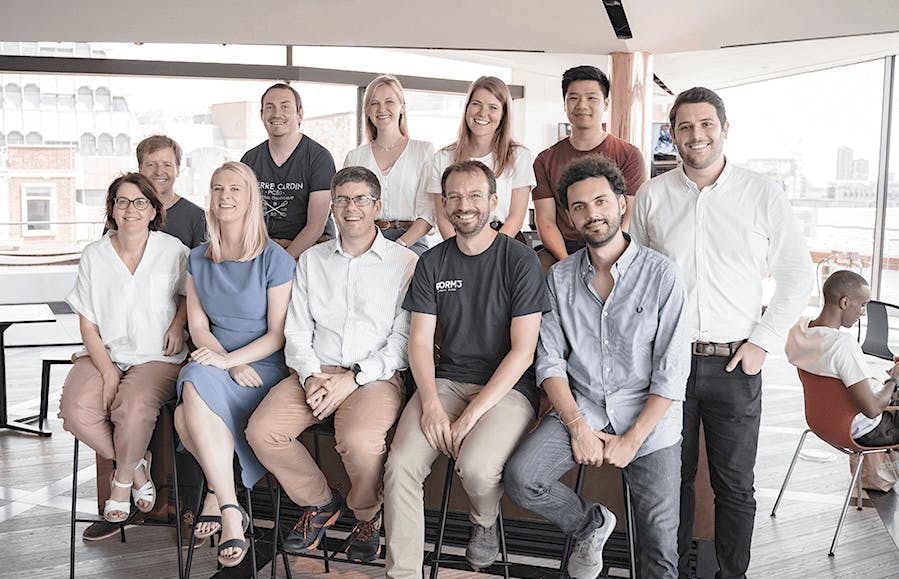Hyper-automation in payments
Thought Leadership· 8min December 11, 2019
What’s all the hype?

Gartner just announced its Top 10 Strategic Technology Trends For 2020. Interestingly, the first one on the list was Hyper-automation.
Essentially what that means is moving from highly manual driven processes to low or no manual processes using combined tools that communicate to complete a task without human intervention. The task may be an alert or response to data patterns for example.
In payments in particular, Hyper-automation is potentially game changing.
According to Gartner “Hyper-automation refers not only to the breadth of the pallet of tools, but also to all the steps of automation itself (discover, analyse, design, automate, measure, monitor and reassess). Understanding the range of automation mechanisms, how they relate to one another and how they can be combined and coordinated is a major focus for hyper-automation.”
Gartner’s report notes that this trend was kicked off with robotic process automation (RPA). (RPA) has helped automate repetitive tasks leading to exponential savings. Now it too is evolving into Hyper-automation.
Of course in reality, it’s a lot more complicated than this simplistic view, but looking at our own approach at Form3, I would say our internal systems are a key candidate for Hyper-automation. Our approach to monitoring, alerting and incident management combines multiple tools that interact with each other and drive very targeted human activity once machines have taken care of a lot of work. We also run rules-based alerting, looking for specific individual breaches in those rules e.g. time of non-response, number of items in a queue, absence of a report etc. Alerts are there to inform the intelligence of the Incident Manager and On-call Engineering teams to assess the outcomes of those alerts and make calls.
Our aspiration for our cloud-native payments platform is to be able to learn the significance of alerts itself. If the platform can learn its own implications, for example, to see patterns in the alerts which either diagnose an issue for self-resolution or even better - to start to see the client facing impacts and then critically to take actions with our clients.
Imagine a scenario such as: Alert A, plus Alert B, plus Alert C within X time. We have seen that 3 times before in the same range, therefore we know that the action needed is Y today. Working out the combinations and programming them into the platform will take time but it is not impossible.
The end result? a position where our platform has the inputs from alerts, the outputs from decisions made by individuals and the platform ‘learns’ from the inputs and outputs of what it should do... and then just does it... including updating clients automatically.
Even further forward, if and when multiple machines can communicate with each other, a significant plus for Form3 customers would be where they get to learn not only from their own payment processing but others as the “platform” has the capability to consolidate, analyse, design and automate across all - and share these learnings back to all. Although hypothetical, I don’t believe this is too far in the future.
For now, we are beginning to shape how Hyper-automation can benefit both Form3 and our customers.
Could it all end in #riseofthemachines?
Maybe.
Written by
Mike was appointed CEO in October 2023, having joined Form3 as CPO and co-founder in 2016. During his roles as CPO he was responsible for strategy, product development, product management as well as strategic initiatives, playing a key role in the business’ funding activities and key client relationships.
Prior to Form3, Mike held senior Product roles within Barclays:
As Product Director for Barclaycard Payment Acceptance (card acquiring) he was a member of the Executive Committee and responsible for P&L, product management, strategy development, vendor selection and management, digital transformation and M&A. As Head of UK Corporate Payments for Barclays Corporate Bank, Mike held product management responsibility for all payment, receipting and reporting products delivered to Barclays corporate clients – this included defining the Barclays Corporate Bank mobile payments strategy and initiating, building and scaling multi-award winning mobile payment solutions. Earlier in his career he managed client relationship teams responsible globally for the North American Financial Institutions and FTSE 250 sectors providing him with significant product and enterprise client experience domestically and internationally.









 Back to News
Back to News

